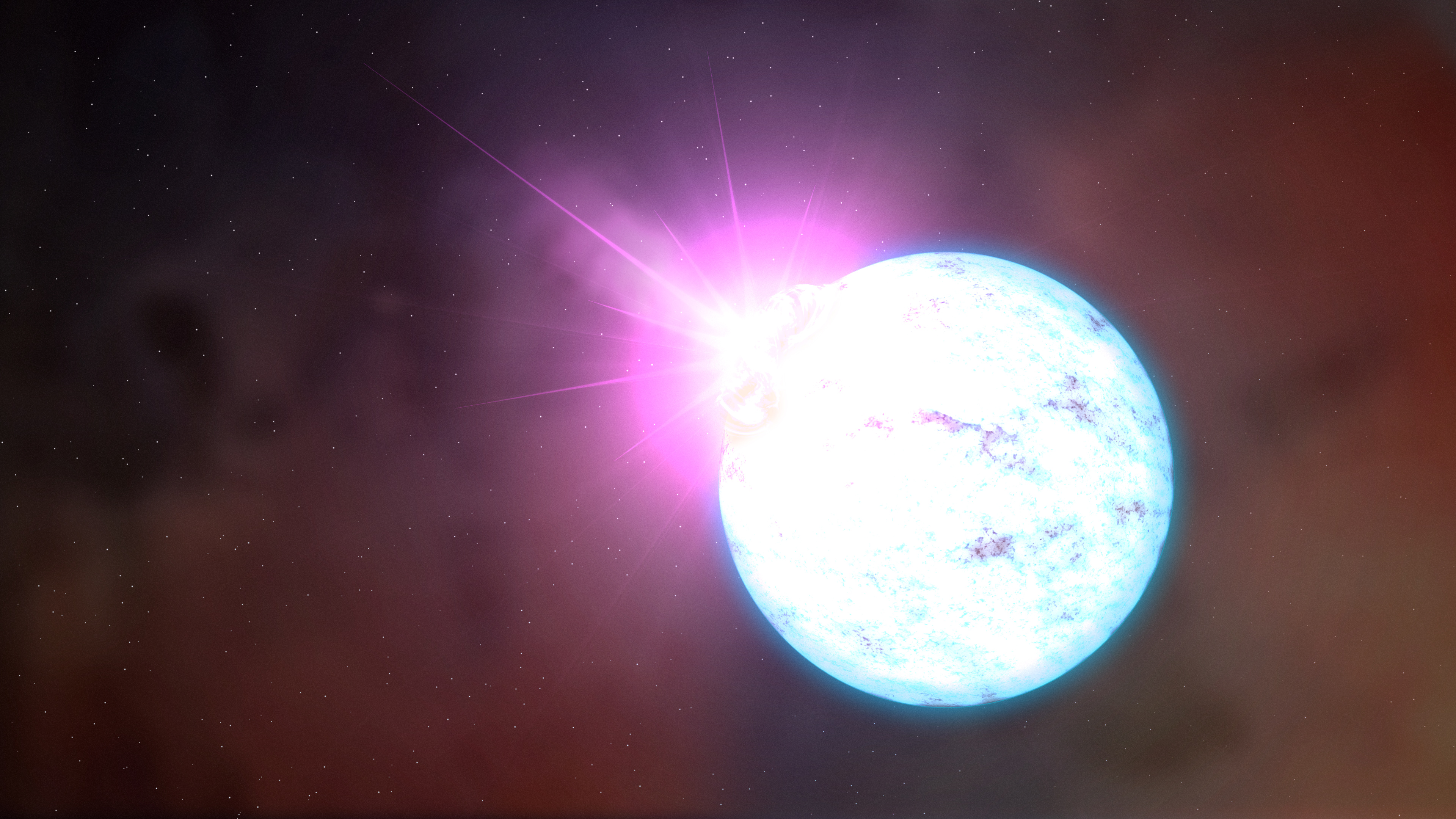Science News
Spinning Magnetar
May 31, 2013
by Alyssa Keimach

Like humans, stars have life cycles. And new data emerging about stellar life cycles allow us to create new diagrams of the stars’ anatomy.
Stars come in all different sizes, and a star’s mass determines its fate: an extremely massive star produces a supernova when it “dies.” But that’s not quite the end of the story… Sometimes the core of a massive star will collapse in on itself, forming a neutron star.
These extremely dense, hot, and pressurized stellar remnants are tiny—about the diameter of San Francisco—but up to three times the mass of our Sun!
It gets crazier. Stars like these spin at hyper speeds—full rotations occurring many times per second! Astronomers can measure the number of rotations by counting the radio pulses that some neutron stars emit with each spin. It turns out that the rate of rotation slows with age as the spinning stars lose momentum.
The gradual slowing of rotational velocity over time is occasionally accented with moments of abrupt velocity increase, known as glitches. Astronomers thought they knew what caused these glitches, until they measured a new type of glitch, as reported recently in Nature.
“I looked at the data and was shocked—the neutron star had suddenly slowed down,” says co-author Rob Archibald, a graduate student at McGill University.
Archibald and his colleagues discovered that spin velocities of unique stars are accented with moments of abrupt velocity decrease, or, an “anti-glitch.”
Anti-glitches were found in a type of neutron star called a magnetar, cleverly named after the unusually intense magnetic field within the star that results in bursts of X-ray radiation.
“We’ve seen huge X-ray explosions from magnetars before, but an anti-glitch was quite a surprise,” says lead author Victoria Kaspi, leader of the Swift magnetar monitoring program. “This is telling us something brand new about the insides of these amazing objects.”
Anti-glitches were not predicted in original neutron star models, so astrophysicists may need to reevaluate all of glitch theory. New models for neutron star anatomy (that accommodate the physics behind anti-glitches) could be on the way!
Alyssa Keimach is an astronomy and astrophysics student at the University of Michigan and interns for the Morrison Planetarium.
Image: NASA's Goddard Space Flight Center